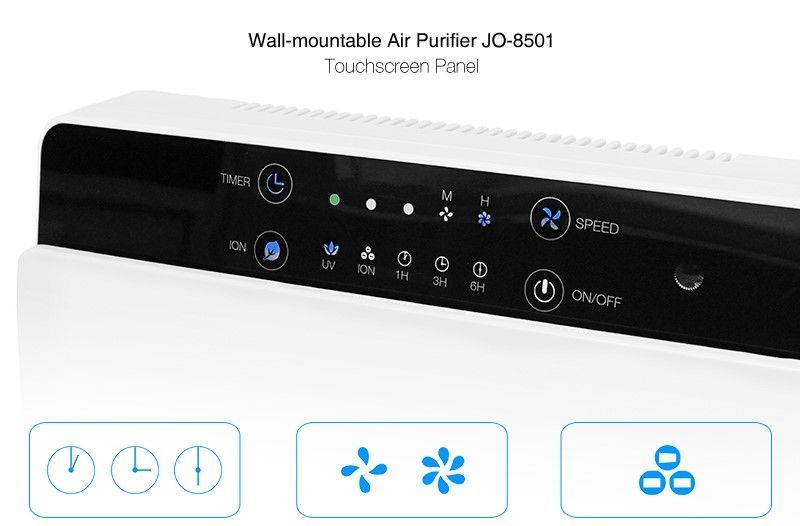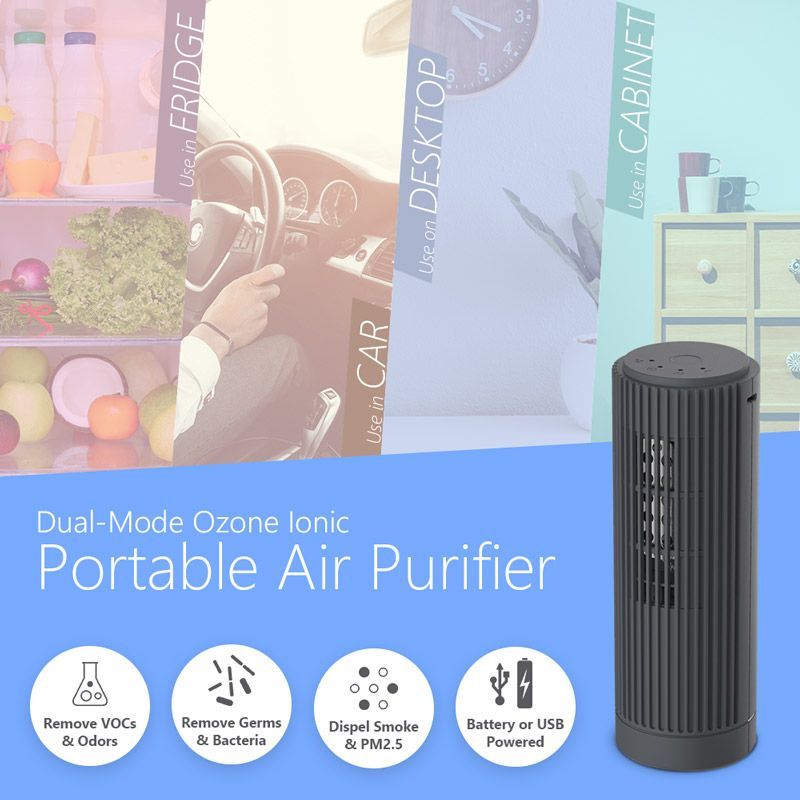Is the air purifier useful in the smog?
Date: 2021-12-13 Categories: Industry News Hits: 2991
1. Is the air purifier useful?
In April 2015, Tsinghua University released the "Indoor Air Quality Survey Data Analysis Report", stating that modern people spend 80% of their time indoors, and the per capita indoor PM2.5 inhalation is four times that of outdoors.
Zhao Bin, a professor at the School of Architecture of Tsinghua University, introduced that even if the doors and windows are completely closed in a haze if no purification measures are taken, the indoor PM2.5 concentration will be at least 1/3 of that of the outdoor. The correct use of air purifiers is necessary to improve indoor air quality.
2. How long does it take for the purifier to work?
After the purifier is turned on, there is an indoor air exchange process, which causes the larger pollutant particles that originally settled on the ground to rise into the air. Indoor air pollution does not drop but rises, and this process will last 20-30 minutes. After that, the concentration of pollutants will decrease as the working time of the purifier increases.
Therefore, it is necessary to pay attention to environmental hygiene and try to keep the environment around the purifier clean and tidy. Zhang Lin, an associate professor in the Department of Electronic Engineering of Tsinghua University, said that the air purifier may generate secondary dust within a short time when it is turned on. It is recommended that you do not turn on the air purifier for less than half an hour.
The working efficiency of the purifier depends on the clean air volume (CADR), that is, the amount of "clean air" provided per unit time. The larger the CADR value, the stronger the purification ability of the purifier. The time required to purify the indoor space = (room volume/purifier CADR) × (2 or 3). Zhao Bin, for example, a 40 cubic meter space, if you use a purifier with a CADR of 40, then it takes about 3 hours to clean the indoor air.
3 When the smog is severe, can windows be opened for ventilation?
It is necessary to find a balance between opening windows for ventilation and air purification. Even if the outdoor air is bad, indoor places with dense people should still be ventilated.
When the outdoor air quality is poor, you can open the window for a shorter time and close the window for a longer time, and keep the air purifier on. For example, when you wake up in the morning and leave the bedroom, you can open the window for a short period of time to ventilate. Once you return to the bedroom, you can immediately close the window and turn on the purifier.
When the outdoor PM2.5 monitoring value is less than 75 micrograms/m3, it is good, opening the window for ventilation is beneficial to the improvement of indoor air quality, and when the outdoor PM2.5 monitoring value is higher than 150 micrograms/m3, opening the window for ventilation This behavior has also become a destructive factor of indoor air quality.
Zhang Lin explained that indoor pollutants are not only PM2.5. Although airtight doors and windows can reduce the impact of smog on the human body, it will increase other pollution. For example, in a long-term unventilated room, the concentration of carbon dioxide will increase, and when its value reaches a certain height, it will have a significant impact on human cognitive behavior.
Zhao Bin said that many mobile apps can view outdoor air quality in real-time, and people can choose a time of day when the air quality is relatively good for ventilation.
4. Where should the purifier be placed?
Zhang Lin pointed out that the purifier should be placed closer to the space in which it is located. Experts pointed out that the suspension time of PM2.5 is relatively long. If the person is far away from the purifier, the air quality around the body will not be improved as soon as possible. It is best to put the purifier next to where the person is, and close the doors of other unused rooms to ensure that the air around you is clean.
5. How often should I change the filter element of the air purifier?
Since different types of purifiers and different frequencies of use will affect the replacement time of the filter element, there is no uniform requirement. Experts suggest that under the weather conditions in Beijing if the filter element of the purifier should be replaced every 1-2 months if the frequency of use is normal.
Zhao Bin gave a specific method of judgment: if it is found that the filter element of the purifier has turned black when it is disassembled, or if it is lightly touched with your hand, you can see obvious dust falling off, it is time to change the element. If it smells bad and then changes it, it's actually too late.
According to Zhang Yinping, director of the Building Environment Testing Center of Tsinghua University, it is more convenient to put the household PM2.5 detector on the air outlet of the air purifier. If the number is no longer reduced or the drop is small, it is time to replace the filter element. It's time.
6. How to choose an air purifier?
Are you still pursuing the "purification rate" when purchasing? Clean air volume and accumulated purification volume have become "new favorites".
According to the new version of the "Air Purifier" national standard, the two indicators of clean air volume and cumulative purification capacity for evaluating purification capabilities have replaced the previous "purification rate" indicators. CADR represents the purification capacity of the purifier, and the cumulative purification capacity (CCM) is the durability index of CADR. The higher the level, the longer the life.
In addition, the person in charge of the National Standards Committee told reporters that it is best to understand the working principle of the purifier product, the evaluation method of the purifier, especially the main technical indicators of the air purifier before purchasing.
Shopping tips
Indoor pollutants are mainly divided into three categories: particulate matter, gaseous pollutants, and microorganisms. "Each key opens a lock", each category has a corresponding solution. Appropriate products should be selected based on actual conditions.
purifiers can be divided into two categories: filter type and electrostatic type:
Filtration purification is a relatively mature technology for intercepting heavy particulate matter in the air, and it is the most common physical purification technology.
Electrostatic dust removal is a method of generating a high-voltage electrostatic field, charging particles in the passing air and collecting them by electrodes with opposite charges to achieve purification, which has a purification effect on fine particles and other pollutants.
Three considerations:
1. If you need to remove solid particulate pollutants and various harmful gases, it is recommended to use products with both solid pollutants and harmful gas purification functions, larger CADR, and higher CCM;
2. If there are sensitive people such as babies and asthma patients at home, it is recommended to use pure physical adsorption machines that do not produce ozone;
3. At the same time, it is recommended to adapt the size of the CADR machine according to the room area, and there is a certain margin. It is not necessary that the bigger the better.
IONKINI AIR PURIFIER RECOMMENDATION, offer you a fresh life.


